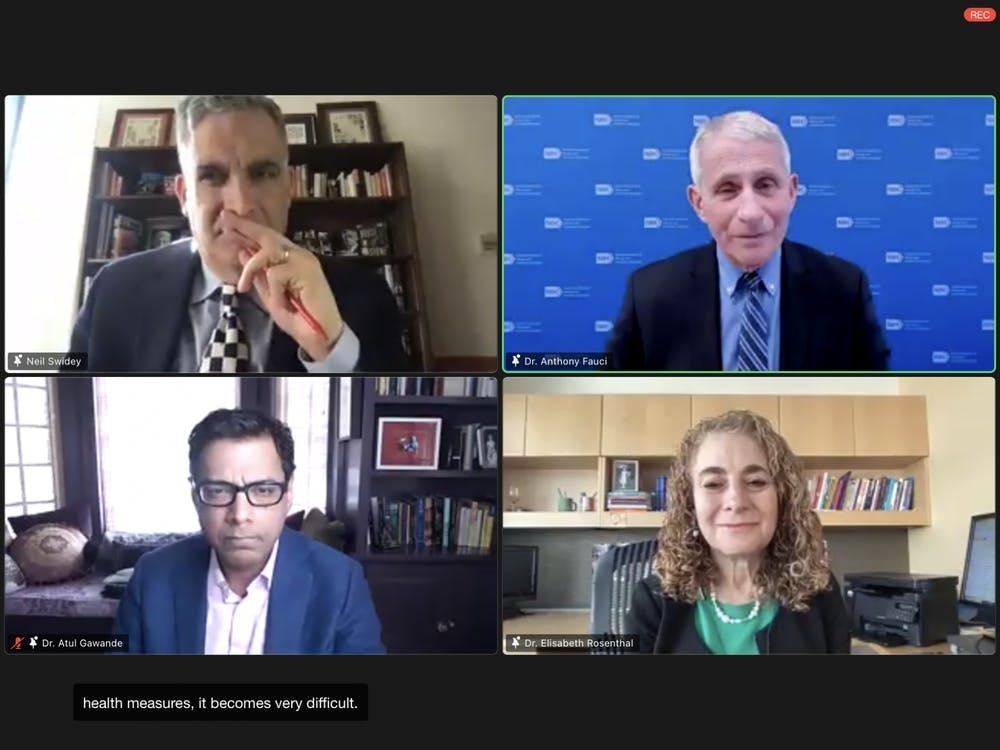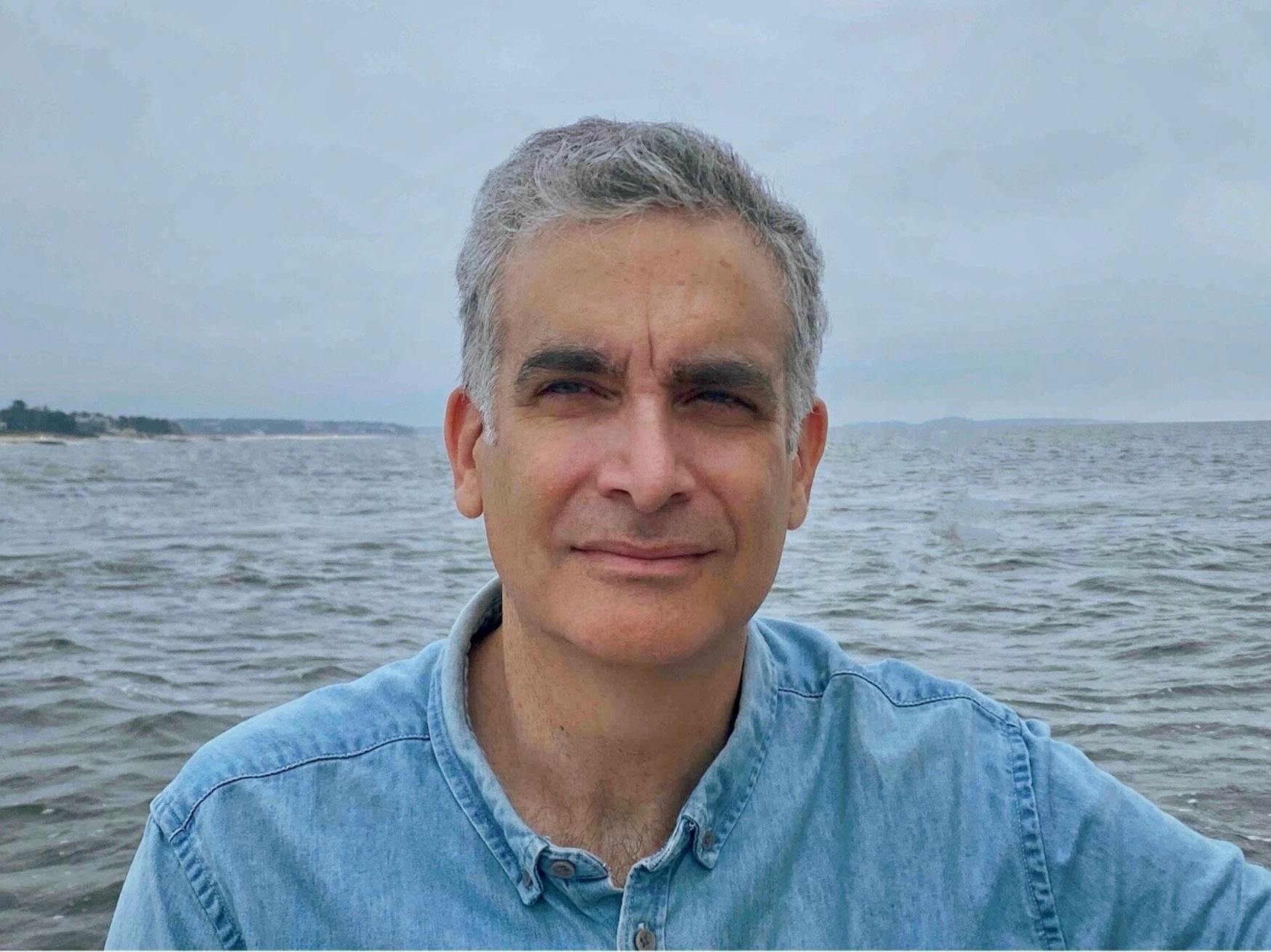Journalism at Brandeis: an evolving program designed to keep up with the 21st century
The Justice spoke to Neil Swidey, the director of the Brandeis Journalism program, about the changes the program has undergone in recent years and his vision for its future.
The Journalism program at Brandeis has gone through many changes since the July 2020 arrival of Neil Swidey, director of the program and professor of the practice. Swidey, an award-winning magazine writer and bestselling author, has been working at the Boston Globe since 1999 and is the Editor at Large of the Boston Globe Magazine. Over the past few years, Swidey has worked to expand and improve Brandeis’ Journalism program, cultivating his vision for the program along the way.
“The idea with the Journalism program is to double down on the things we've always done well in the program, like ethics and the history of journalism, and then inject into that new courses and programming that helps students figure out how the journalism landscape is changing and how they can make the best use of that — whether they go into journalism professionally or just as citizens of the democracy,” Swidey said in an interview with the Justice on Jan. 24.
The variety of new journalism courses offered at Brandeis since Swidey became head of the program reflect his personal philosophy and vision for the program. One of the courses being offered for the first time this semester is “Covering the World: International Reporting and Global Affairs,” taught by Romesh Ratnesar and Catherine Elton, two journalists with impressive backgrounds in the field. Elton is a senior editor at Boston Magazine, but she has spent half her career as a Latin American correspondent in Peru and Guatemala. Ratnesar has had a history of senior editing and managing roles for Time Magazine, Bloomberg, and other publications, his focus being the Middle East and Asia. Together, Elton and Ratnesar have experience in a vast range of global journalism. Their course will teach students how to examine global news and the way in which it informs what's going on in the United States.
Another impressive journalist that joined the Brandeis faculty is Ann Silvio, who Swidey brought on to teach at Brandeis in spring 2021. Silvio worked at the CBS News show “60 Minutes” for 10 years, where she developed and led their online programming and digital operations. The first course that Silvio taught was “Truth, Fact and Research in Journalism,” offered in spring 2021. The course she is currently teaching, “Documentary Journalism — Reporting and Storytelling for Broadcast,” is being taught for the first time this semester. In this class, students will examine the way people are using journalism skills and methodologies to portray stories and investigate issues through documentary journalism, as well as what constitutes a journalistic documentary and how to tell which documentaries are journalistic in nature and which documentaries are more biased filmmaking.
Another course offered for the first time this semester is “Advanced Multimedia Storytelling” by Mark Dellelo. A sequel to the multimedia storytelling course typically offered in the fall, this advanced course lets students focus on specific forms of multimedia production and hone their skills in order to tell stories and investigate topics on a deeper level. Students will be creating a full-fledged podcast throughout the semester with an alternate option to pursue a video project.
“Science Journalism, the Pandemic and Disinformation,” taught by Neil Swidey for the first time in spring 2021, is also being offered this semester. Swidey said that he initially wasn’t planning to offer the course this year: “I thought I would take a year off, but the pandemic just kept getting worse and worse. And I thought, ‘Well, we have to do it again,’ but it's almost completely new material this year versus last year,” he explained, adding, “We have a quicker metabolism for making sure we're updating our curriculum while also kind of keeping the bedrock skills and thinking that goes into that, and then updating it to what's actually changing.”
This course is just one example of how changing trends within the constantly evolving worlds of media and journalism require Swidey and the rest of the Journalism program to not only adjust course offerings each semester, but also to make significant adjustments within existing courses in order to keep up. This semester, not only is Swidey taking on the new trends in COVID-19 media coverage, but he is also focusing heavily on climate change coverage in the United States.
“So I thought, ‘Well, we should do not just the pandemic, but also climate change.’ And that's part of the event that we're going to be having with the nation's climate change official, Gina McCarthy,” Swidey said, referring to the Brandeis Journalism webinar that McCarthy is leading on March 8. The National Climate Advisor within the Biden administration, McCarthy is the top climate official within the federal government. “This is the single most influential person right now in determining climate change policy,” Swidey said, explaining that this event will be similar to the COVID-19 panel that Brandeis Journalism hosted last year, which was led by Dr. Anthony Fauci, the Chief Medical Advisor to the President of United States. At this event, students were able to submit questions, which were discussed by Fauci and the other panelists.

Dr. Anthony Fauci spoke about science journalism amid the COVID-19 pandemic at a March 2021 panel hosted by Brandeis Journalism and moderated by Prof. Swidey.
The program constantly changing and offering new material is all part of a larger plan to create a Journalism major in the future. Before the pandemic, Swidey was in the process of developing the Journalism major. Due to the sudden shift to online courses and a variety of other issues taking precedence, that planning took a backseat. However, Swidey still puts incredible emphasis on student feedback, citing the success of the current program to ensure future success of a major program.
“We had some plans and then the pandemic put everything on hold for that,” Swidey explained. Though this delay was unexpected, he decided to utilize it to improve and fine-tune the minor. “We'll just use this time to figure things out so that we'll be able to make even better decisions about what this kind of new major would look like,” he said. “Having done this experimenting, this expansion, and bringing in new people and new courses, I didn't want students to have to wait for a couple of years to see the kinds of things that we would envision expanding in a major. I wanted to roll some of those out now.”
Swidey is still in the process of creating a Journalism major, but the feedback he is receiving from students now about new ventures in the program are proving to be beneficial to the creation of this major and future courses as well.
“Getting students involved as paid researchers to figure out what's going on, the terrain of materials we should be studying and looking at, and getting student input as well, we'll be doing that for a new course that I'm going to be working with students and other faculty on called ‘From Ida B to AOC,’” Swidey said. This course plans on looking at how women throughout history have utilized new media to impact how news is communicated and consumed.
Taking the time necessary to develop and improve the plans for the Journalism major is just as important as working on new courses and events, Swidey explained. He is staying true to his original philosophy about learning in the Journalism program, placing emphasis on teaching skills to last a lifetime in any discipline, not just journalism.
“I also think that majors that focus more on delivering a set of skills and a set piece of technology are almost always outdated by the time the student graduates. It just can't keep up with that. And so that's why our goal is to teach students how to learn, to have them embrace technology — but not be led or misled by it — and to have them know how to go find information, to follow their curiosity … to arm them with the skills and the developed muscles to figure out what isn't being talked about, and to go uncover those things and then share it with the wider world. I think those are timeless.”
This ever-evolving program is flourishing thanks in large part to the hard work and dedication of Swidey, and he has no plans on stopping anytime soon. As new courses, new professors, and events will continue to be offered, students can expect a Journalism major at some point in the future. For now, Swidey still recommends that students take Journalism courses and provide invaluable feedback that will help the Journalism program continue to improve.



Please note All comments are eligible for publication in The Justice.